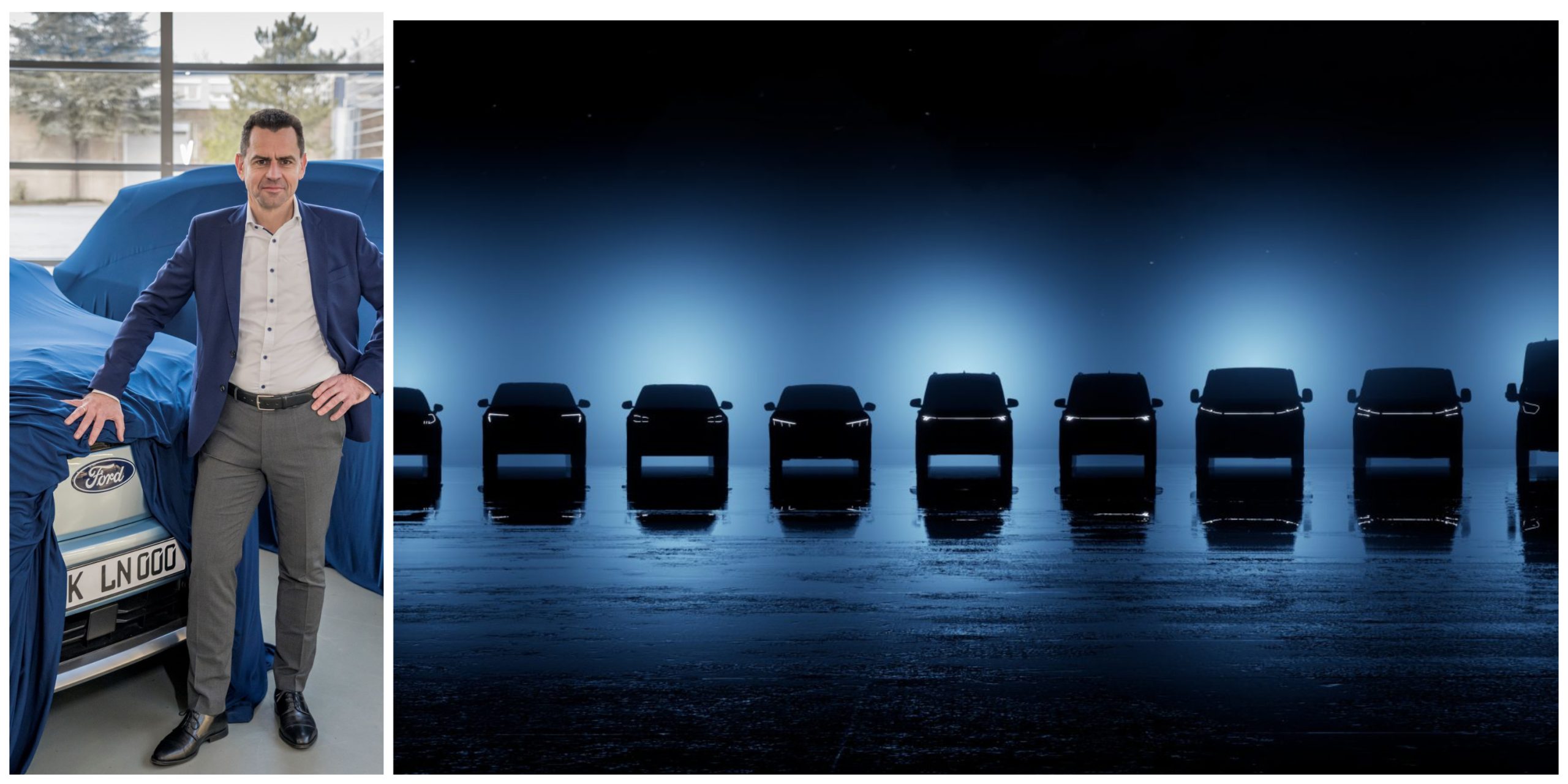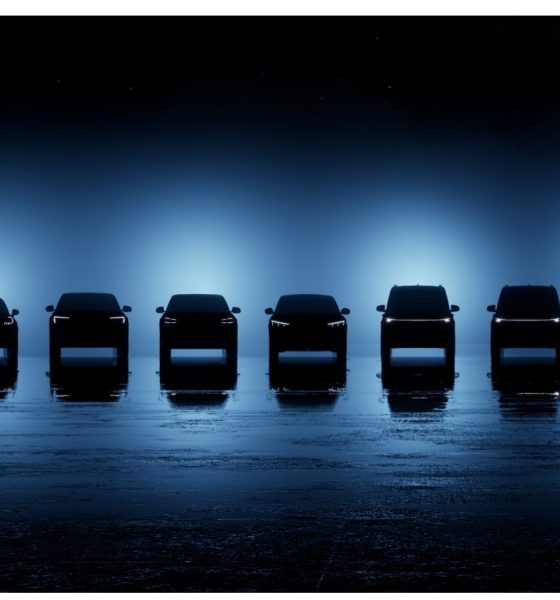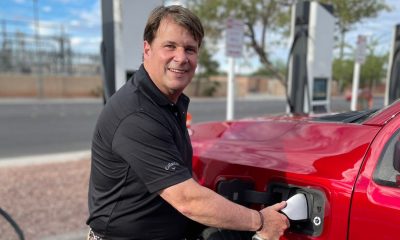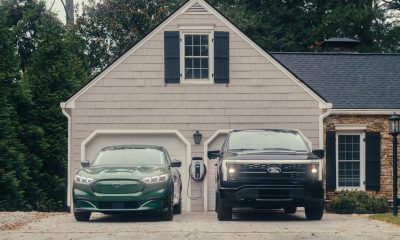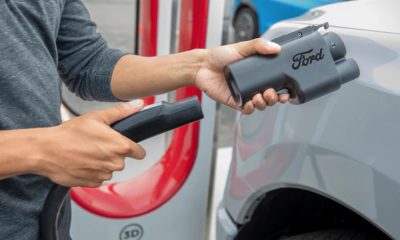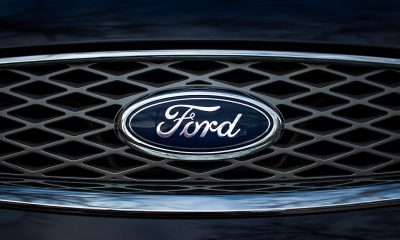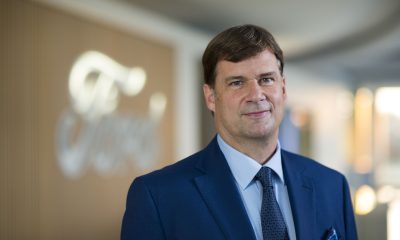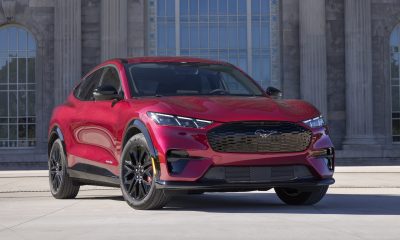Ford has once again teased the imminent unveiling of its new electric vehicle for the European market, which it will finally reveal in two weeks.
On March 21, Ford will reveal a brand-new EV made for the European market, an all-electric crossover that is just the first portion of seven planned new models that the automaker plans to release in Europe by next year.
ONLY TWO MORE WEEKS to go until we reveal our brand-new #EV made in Europe for European customers.
It will proudly display the @Ford Blue Oval – refreshed in brilliant white for a new generation of #EVs.
Join us on March 21 as we share with the world!#ExploringReinvented pic.twitter.com/PW5uOW3nkH
— Martin Sander (@MSander22) March 8, 2023
Very few details about the car are known currently, but past details revealed by Ford give us some ideas and plans for the car, which launches a staunch effort toward expanding its electric vehicle lineup in Europe.
The vehicle will be produced in Cologne, Germany, and will be the first of two EVs added to production lines at that factory. Along with a new iteration of the Ford Puma that will be electric, the new vehicle that will be unveiled in two weeks will join new crossovers, a Tourneo Courier, Transit Custom, and Tourneo Custom vehicle.
This vehicle, in particular, is the planned replacement of the Fiesta, which was planned to be phased out according to the company’s massive announcement last year that initiated Ford’s huge plans for a major transition toward electrification that is set to launch this year.
The Cologne Electrification Center is expected to begin EV production with a five-seat, medium-sized crossover, which is likely what Martin Sander, Head of Ford Europe, teased in the above Tweet.
Ford will spend roughly $2 billion at the plant to build EVs along with a new battery assembly facility that will become operational in 2024.
I’d love to hear from you! If you have any comments, concerns, or questions, please email me at joey@teslarati.com. You can also reach me on Twitter @KlenderJoey, or if you have news tips, you can email us at tips@teslarati.com.
Energy
Tesla inks multi-billion-dollar deal with LG Energy Solution to avoid tariff pressure
Tesla has reportedly secured a sizable partnership with LGES for LFP cells, and there’s an extra positive out of it.

Tesla has reportedly inked a multi-billion-dollar deal with LG Energy Solution in an effort to avoid tariff pressure and domesticate more of its supply chain.
Reuters is reporting that Tesla and LGES, a South Korean battery supplier of the automaker, signed a $4.3 billion deal for energy storage system batteries. The cells are going to be manufactured by LGES at its U.S. factory located in Michigan, the report indicates. The batteries will be the lithium iron phosphate, or LFP, chemistry.
Tesla delivers 384,000 vehicles in Q2 2025, deploys 9.6 GWh in energy storage
It is a move Tesla is making to avoid buying cells and parts from overseas as the Trump White House continues to use tariffs to prioritize domestic manufacturing.
LGES announced earlier today that it had signed a $4.3 billion contract to supply LFP cells over three years to a company, but it did not identify the customer, nor did the company state whether the batteries would be used in automotive or energy storage applications.
The deal is advantageous for both companies. Tesla is going to alleviate its reliance on battery cells that are built out of the country, so it’s going to be able to take some financial pressure off itself.
For LGES, the company has reported that it has experienced slowed demand for its cells in terms of automotive applications. It planned to offset this demand lag with more projects involving the cells in energy storage projects. This has been helped by the need for these systems at data centers used for AI.
During the Q1 Earnings Call, Tesla CFO Vaibhav Taneja confirmed that the company’s energy division had been impacted by the need to source cells from China-based suppliers. He went on to say that the company would work on “securing additional supply chain from non-China-based suppliers.”
It seems as if Tesla has managed to secure some of this needed domestic supply chain.
Lifestyle
Tesla brings perhaps the coolest interior feature to cars in latest update
Tesla adds on to the “fun” aspect of its vehicles.
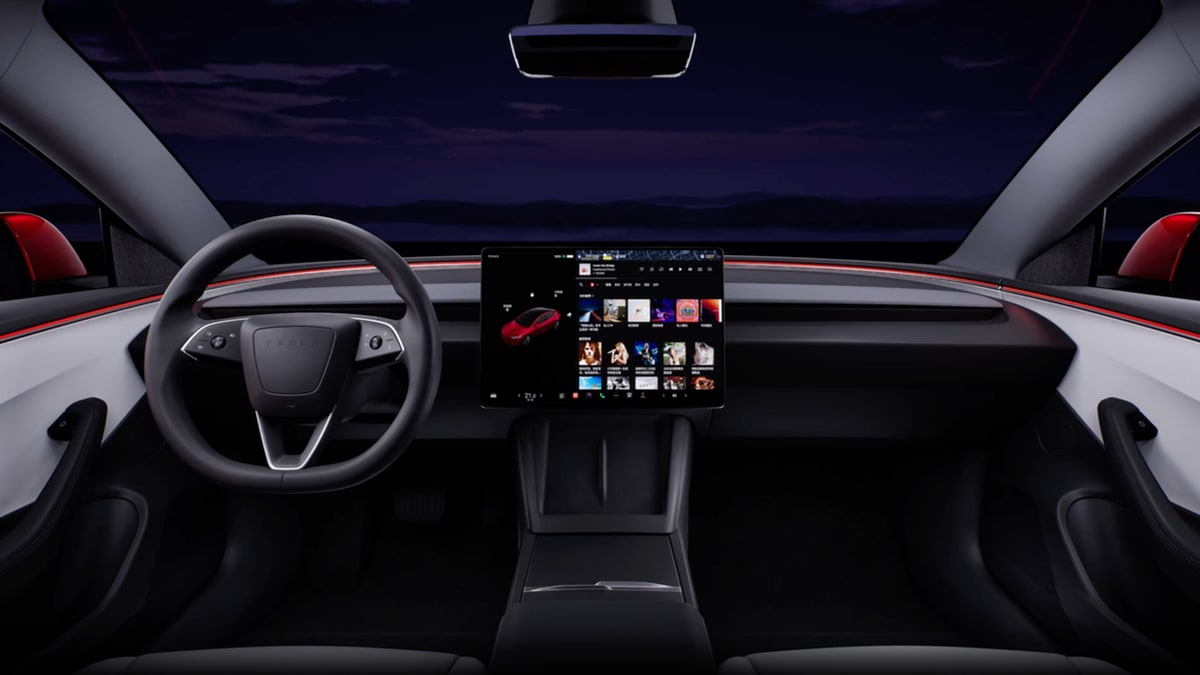
Tesla has brought perhaps the coolest interior feature to its cars in a new update that is rolling out to vehicles now.
The feature will require a newer vehicle that has interior ambient lighting, which is present on the new Model S, Model X, Model 3 “Highland,” and Model Y “Juniper.” The Cybertruck also has ambient lighting strips throughout.
Tesla Model Y’s ambient lighting design changes revealed in leaked video
With the Version 2025.26+ Software Update, Tesla is rolling out a new “Sync Accent Lights w/ Music” feature, which is available on the Tesla Toybox:
Turn your Tesla into a rave cave with the new Light Sync feature 🎶
Rolling out now in software update 2025.26+ pic.twitter.com/IIsQxZ9jDP
— Tesla (@Tesla) July 29, 2025
To enable the feature, you’ll access the Toybox, choose “Light Sync,” and then choose “Sync Accent Lights w/ Music.”
Although it does not improve the performance of the vehicle, it is yet another example of Tesla making one of the coolest cars out there. This is truly a cool add-on that can be used to impress your friends and family.
News
Tesla uses Sydney Sweeney ad controversy to flex its car seat testing strategy
Tesla says its seat robot also has great jeans, just like Sydney Sweeney.
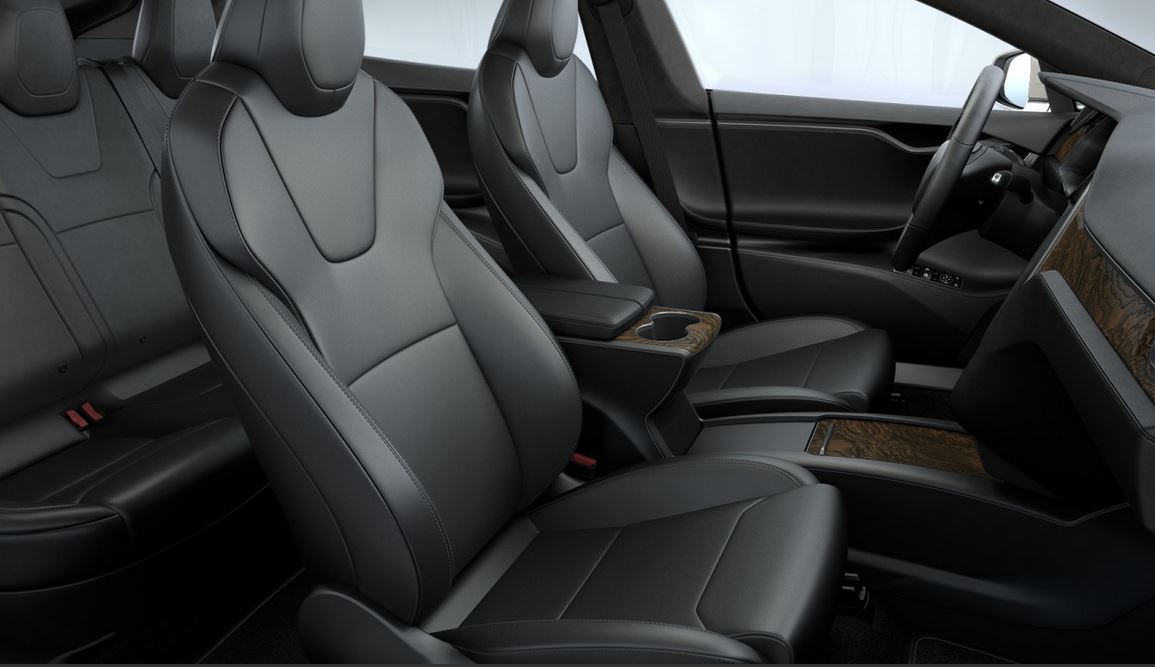
Tesla has a knack for making light of a situation. As tensions seem to be high over American Eagle’s latest jeans ad featuring Hollywood it girl Sydney Sweeney, the automaker saw it as a grand opportunity to show off its seat testing.
Tesla builds and does quality control on its own car seats, and they have been built at a factory just down the street from the Fremont Factory for some time. It also performs quality testing in-house.
Elon Musk shares first look at Tesla Model 3 white seats at factory
Outside of the Tesla world, there is a strange controversy going on with Sydney Sweeney and her recent ad for American Eagle, where she describes her “good jeans.” Some see it as a commercial for jeans, others see it as something else, perhaps a political statement of some sort by the clothing maker.
Nevertheless, Tesla is making light of the joke and using it as a chance to show off its in-house seat testing, stating, “Our seats robot also has great jeans.”
Here’s the post:
Our seats robot also has great jeans pic.twitter.com/BCVJEtxbnD
— Tesla (@Tesla) July 30, 2025
Tesla went on to refer to the robot as “Sydney Seatney.”
It is nice to see some companies still have a sense of humor, and as the controversy over a seemingly innocuous ad for a pair of jeans continues to rage on, it will be interesting to see who comes after Tesla for this one. It will obviously draw some attention.
The video here is actually from 2019, and not from recently. The robot and machine used in this testing phase simulate long-term use. This is one of the most crucial testing processes the seats go through during the quality assurance phase.
-
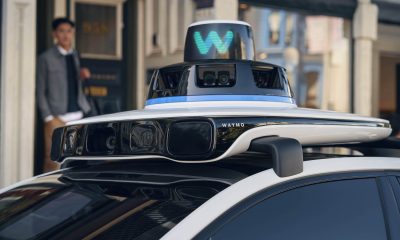
 Elon Musk2 weeks ago
Elon Musk2 weeks agoWaymo responds to Tesla’s Robotaxi expansion in Austin with bold statement
-

 News2 weeks ago
News2 weeks agoTesla exec hints at useful and potentially killer Model Y L feature
-
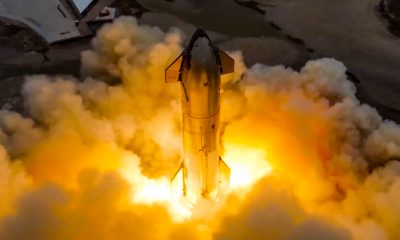
 Elon Musk2 weeks ago
Elon Musk2 weeks agoElon Musk reveals SpaceX’s target for Starship’s 10th launch
-
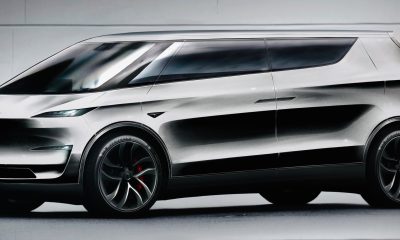
 News2 weeks ago
News2 weeks agoTesla’s longer Model Y did not scale back requests for this vehicle type from fans
-

 News2 weeks ago
News2 weeks ago“Worthy of respect:” Six-seat Model Y L acknowledged by Tesla China’s biggest rivals
-

 News2 weeks ago
News2 weeks agoFirst glimpse of Tesla Model Y with six seats and extended wheelbase
-

 Elon Musk2 weeks ago
Elon Musk2 weeks agoElon Musk confirms Tesla is already rolling out a new feature for in-car Grok
-
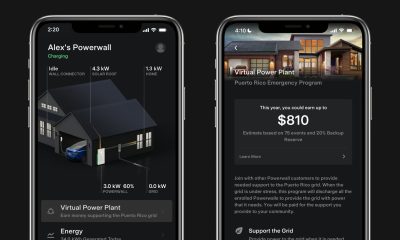
 Energy2 weeks ago
Energy2 weeks agoTesla launches first Virtual Power Plant in UK – get paid to use solar

